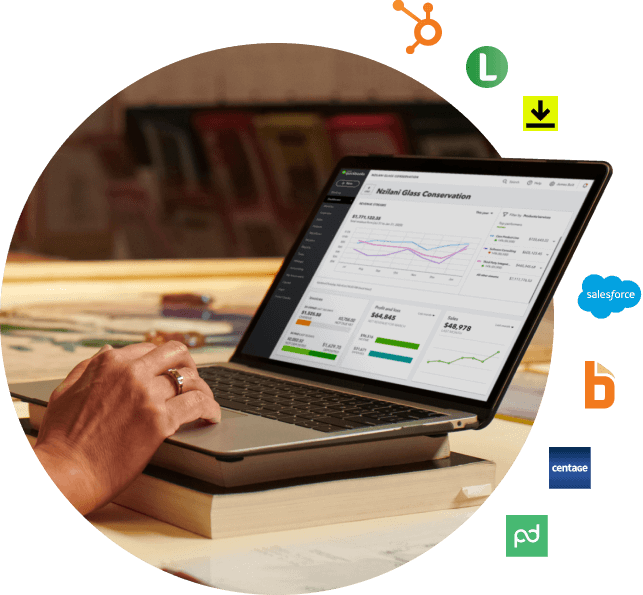Sponsored Content
How to Know it’s the Right Time to Move Clients to QuickBooks Online Advanced
You want your clients to have a seamless experience you can manage and the client can use with ease, while also using the data to help the client grow their business.
Mar. 29, 2023

When you’re meeting with your clients and prospects, how do you instinctively know which version of QuickBooks Online is right for them? After all, you want your clients to have a seamless experience you can manage and the client can use with ease, while also using the data to help the client grow their business.
There’s QuickBooks Online … and then there’s QuickBooks Online Advanced. In addition, many accountants are moving their clients from QuickBooks Desktop to QuickBooks Online, and in many cases, Advanced is a good choice.
“While there are a lot of ways to know it’s time to move a client to Advanced, I start with custom roles as the first indicator,” said Dave Kersting, founder and CEO of Capovario, a QuickBooks ProAdvisor who has clients on both versions. “When a company reaches what I’d call a mid-sized and growing business, and grows to the point that it needs to create custom roles so they can provide specific people with access to specific areas of QuickBooks Online, without providing full access to everyone. That’s definitely a good indicator that they’ll need a more advanced solution.”
Two new features
Over the last several years, Advanced has evolved with more features and enhancements. For example, one of the newest features is Spreadsheet Sync. Curious how a client’s subsidiary company is affecting their overall business performance?
Spreadsheet Sync can be used to group QuickBooks data from multiple companies. You can merge multiple charts of accounts and let Excel handle the complex calculations to save time and generate the consolidated reports your clients are looking for. To continue tracking multiple entities or companies, you can save these reports and refresh them with the latest data anytime.
Another new feature is the ability to set email schedules for standard and custom reports. Now, you and your clients can send relevant reports and insights directly to stakeholders’ email inboxes automatically by setting schedules from the standard reports tab, in the custom reports tab, or while creating a custom report.
“People are always requesting financial reports and they may be needed by a full team, only part of the team, or only for executive teams,” said Kersting. “Without this new feature, we spend far too much time creating reports and getting them to the right people. Doing this manually is slow and leaves too much room for accidentally emailing someone a report they weren’t supposed to see. It’s incredible to be able to schedule reports to automatically go out to only the team members that need them.”
Saving time is the key, but detail is important
According to Kersting, another indicator that it’s time to move to Advanced is when a client is very engaged with their books and wants a high level of detail.
“It’s also a good indicator when clients have complex finance or accounting needs they want to have insight into,” he said. “With Advanced, you can use tools such as customizable business analytics, visual cash flow, and revenue dashboards. When a business grows to multiple locations, it’s another sign that it’s time to move to Advanced or upgrade from QuickBooks Online.”
As businesses grow, so does the need for more financial reporting that is updated and can be produced faster.
“When we are spending more than 1 hour a day preparing reports that may be looked at for 5 minutes or less, it’s time for Advanced,” For example, a client’s A/R bookkeeper only needs to know what money is owed to the company, so they need the reports related to A/R and collections to stay on top of cash flow. With Advanced, you can give them what they need, when they need it, and without giving them access to things they do not need to be concerned with. This increases productivity.”
More new features
In addition to Spreadsheet Sync and email schedules, here are several more added new features in Advanced:
- Using Spreadsheet Sync, you can track project performance at any point with Estimates vs. Actuals in Projects.
- For accrual-basis accounting that’s GAAP-compliant, you can recognize deferred revenue automatically withRevenue Recognition.
- Custom roles in Advanced now include more detailed permissions for invoices and bills.
- With Advanced, your clients also get a more seamless way to back up and restore their data as needed with the backup and restore upgrade, including automatic pre-checks to improve restore success rates.
- Custom Report Builder allows Advanced users to make their own reports to meet their specific needs.
- With the Performance Center, they can create customized charts and graphs, and track their own business KPIs.
Where do you go from here? You can use the indicators Kersting uses to determine when it’s the right time to make the move to Advanced, and visit this page for more information.
